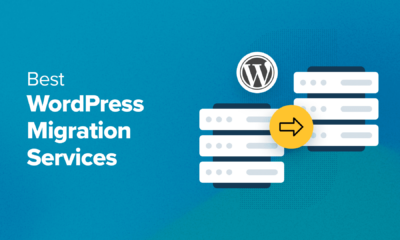TECHNOLOGY
Digitalised workplaces for optimised public services

Governments across the globe have long recognised the need to undertake a form of digital transformation. Many have been working for some time on transformation strategies designed to support the gradual adoption of digital technologies to increase productivity, improve efficiency, and enable better resource management.
Whatever shape these strategies took, they had one common goal – to create the next-generation digital infrastructure that would improve the delivery of services to citizens, from tailored health services and customised education to personalised administrative services and safer care for all. Two years ago, though, the pandemic changed everything.
Suddenly, governments’ mid- and long-term digital transformation objectives had become redundant. Government workforces quickly had to move to working remotely, while governments themselves had to adapt to find ways to continue delivering services to citizens. Fortunately, the wealth of digital tools available meant governments at all levels were able to shift their operations and service delivery online.
A short step
These weren’t the only things that shifted. Life under COVID changed societal expectations about how the world should work. More than half of public and private sector workers say they’d like to work from home at least three days a week now the worst of the pandemic is over, for example, while 55 percent of companies believe the pandemic has prompted a need for greater digitalisation.
To meet these expectations, governments must, once again accelerate their digital transformation strategies. Indeed, the current trend for hybrid working should be a short intermediate step toward a digital workplace.
In a digital workplace, advanced data and digital technologies will enable greater collaboration and communication among government employees, as well as between governments and citizens. This, in turn, will support new, more innovative, agile and – importantly – participatory forms of governing and delivering public services.
The European Commission explains that the digital workplace “will provide staff with the right IT tools, platforms, and services, enabling users to work and collaborate anywhere, anytime with fit-for-purpose security, and optimising their work experience and productivity. It will be adaptive and flexible to incorporate different types of users, new behaviours, and new technologies.”
Employees will use a single platform for unified communications, collaboration, mail, calendar and task management tools, all of which will be accessible from wherever – and whenever – people choose to work. Ultimately, the digital workplace will allow employees to work more flexibly, with the autonomy they need to work in a way that suits them best.
Full digitalisation
Achieving the benefits offered by the digital workplace means looking beyond immediate requirements for hybrid working, to ensure governments are in a position to meet the expectations of workers and citizens alike – long after the health crisis has become a distant memory. To this end, the Organisation for Economic Cooperation and Development (OECD) suggests that creating the digital workplace requires the full digitalisation of the public sector.
This digitalisation should apply as much as to external government processes as to internal operations. Self-serve digital portals should become standard for most government services that don’t require citizens to connect directly with government employees. This way, citizens will be able to access the services they need more quickly, from wherever they are, and whenever they need them.
And in those cases where citizens do have to connect to a government employee, those employees will have the digital tools they need to access information and respond to questions and requests in real time – a much better experience for both parties.
The evolution to a digital workplace will not be without its challenges, however.
Tackling challenges
Without the right technologies and digital tools, no digitalisation effort will ever reach its full potential. Governments must therefore consider a variety of technological challenges.
It’s vital, for instance, to ensure that employees and citizens always have secure access to applications and important data wherever they are via public, private, or hybrid cloud environments. Robust connectivity is essential, too, if employees and citizens are to have access to the network, applications, and data that power the digital workplace. IT silos, created over time by dividing responsibilities among multiple internal teams for desktop tools, citizen interfaces, and network and communications services, must be streamlined if they are to operate with any efficiency. And, of course, these must be protected at every point throughout the communication and collaboration process.
By addressing such challenges, governments can build a robust technology foundation for a digital workplace that will meet the needs of employees and enable them to deliver on the service expectations of citizens.
Building a foundation
Enabling efficient and effective communications and collaboration should be the overarching goal of any technology foundation upon which a government can build a digital workplace. But, if this foundation comprises multiple disparate elements, it won’t provide the seamless technology integration needed to support not only the organisation’s immediate requirements, but also a smooth transition to more complex workplaces in the future.
The ideal technology foundation should streamline communications between employees and allow more efficient communications with citizens. A single integrated environment is the right foundation for integrating speciality applications and enhancing communications with services such as common calendars and directories, chatbots, and more complex AI-powered cognitive technology.
Wired and wireless connectivity is a given, allowing both employees and citizens to access the networks that enable connections, support advanced applications, and facilitate the flow of information. But governments must also provide inclusive technology for those citizens who may not have the tools necessary for accessing digital services. This may involve the creation of publicly available digital access points – kiosks or service locations equipped with tablets or computers citizens can use to connect with government services.
And the entire communications and collaboration environment must be underpinned by ubiquitous advanced security practices, policies, and procedures, constantly updated to protect the network and the data it holds from potential intrusions – at every step of the value chain.
The pandemic had a significant impact on digital transformation in the public sector. Long-planned strategies were put on hold to ensure ‘business as usual’. And now, as life returns to normal, and organisations everywhere adopt hybrid working practices, it looks as though that impact is irrevocable. Governments should consider it an evolutionary step. The future of the public sector lies in the digital workplace. By overcoming potential challenges now, governments and citizens will enjoy more efficient and effective service delivery for the good of all.
Source link
TECHNOLOGY
Next-gen chips, Amazon Q, and speedy S3

AWS re:Invent, which has been taking place from November 27 and runs to December 1, has had its usual plethora of announcements: a total of 21 at time of print.
Perhaps not surprisingly, given the huge potential impact of generative AI – ChatGPT officially turns one year old today – a lot of focus has been on the AI side for AWS’ announcements, including a major partnership inked with NVIDIA across infrastructure, software, and services.
Yet there has been plenty more announced at the Las Vegas jamboree besides. Here, CloudTech rounds up the best of the rest:
Next-generation chips
This was the other major AI-focused announcement at re:Invent: the launch of two new chips, AWS Graviton4 and AWS Trainium2, for training and running AI and machine learning (ML) models, among other customer workloads. Graviton4 shapes up against its predecessor with 30% better compute performance, 50% more cores and 75% more memory bandwidth, while Trainium2 delivers up to four times faster training than before and will be able to be deployed in EC2 UltraClusters of up to 100,000 chips.
The EC2 UltraClusters are designed to ‘deliver the highest performance, most energy efficient AI model training infrastructure in the cloud’, as AWS puts it. With it, customers will be able to train large language models in ‘a fraction of the time’, as well as double energy efficiency.
As ever, AWS offers customers who are already utilising these tools. Databricks, Epic and SAP are among the companies cited as using the new AWS-designed chips.
Zero-ETL integrations
AWS announced new Amazon Aurora PostgreSQL, Amazon DynamoDB, and Amazon Relational Database Services (Amazon RDS) for MySQL integrations with Amazon Redshift, AWS’ cloud data warehouse. The zero-ETL integrations – eliminating the need to build ETL (extract, transform, load) data pipelines – make it easier to connect and analyse transactional data across various relational and non-relational databases in Amazon Redshift.
A simple example of how zero-ETL functions can be seen is in a hypothetical company which stores transactional data – time of transaction, items bought, where the transaction occurred – in a relational database, but use another analytics tool to analyse data in a non-relational database. To connect it all up, companies would previously have to construct ETL data pipelines which are a time and money sink.
The latest integrations “build on AWS’s zero-ETL foundation… so customers can quickly and easily connect all of their data, no matter where it lives,” the company said.
Amazon S3 Express One Zone
AWS announced the general availability of Amazon S3 Express One Zone, a new storage class purpose-built for customers’ most frequently-accessed data. Data access speed is up to 10 times faster and request costs up to 50% lower than standard S3. Companies can also opt to collocate their Amazon S3 Express One Zone data in the same availability zone as their compute resources.
Companies and partners who are using Amazon S3 Express One Zone include ChaosSearch, Cloudera, and Pinterest.
Amazon Q
A new product, and an interesting pivot, again with generative AI at its core. Amazon Q was announced as a ‘new type of generative AI-powered assistant’ which can be tailored to a customer’s business. “Customers can get fast, relevant answers to pressing questions, generate content, and take actions – all informed by a customer’s information repositories, code, and enterprise systems,” AWS added. The service also can assist companies building on AWS, as well as companies using AWS applications for business intelligence, contact centres, and supply chain management.
Customers cited as early adopters include Accenture, BMW and Wunderkind.
Want to learn more about cybersecurity and the cloud from industry leaders? Check out Cyber Security & Cloud Expo taking place in Amsterdam, California, and London. Explore other upcoming enterprise technology events and webinars powered by TechForge here.
TECHNOLOGY
HCLTech and Cisco create collaborative hybrid workplaces

Digital comms specialist Cisco and global tech firm HCLTech have teamed up to launch Meeting-Rooms-as-a-Service (MRaaS).
Available on a subscription model, this solution modernises legacy meeting rooms and enables users to join meetings from any meeting solution provider using Webex devices.
The MRaaS solution helps enterprises simplify the design, implementation and maintenance of integrated meeting rooms, enabling seamless collaboration for their globally distributed hybrid workforces.
Rakshit Ghura, senior VP and Global head of digital workplace services, HCLTech, said: “MRaaS combines our consulting and managed services expertise with Cisco’s proficiency in Webex devices to change the way employees conceptualise, organise and interact in a collaborative environment for a modern hybrid work model.
“The common vision of our partnership is to elevate the collaboration experience at work and drive productivity through modern meeting rooms.”
Alexandra Zagury, VP of partner managed and as-a-Service Sales at Cisco, said: “Our partnership with HCLTech helps our clients transform their offices through cost-effective managed services that support the ongoing evolution of workspaces.
“As we reimagine the modern office, we are making it easier to support collaboration and productivity among workers, whether they are in the office or elsewhere.”
Cisco’s Webex collaboration devices harness the power of artificial intelligence to offer intuitive, seamless collaboration experiences, enabling meeting rooms with smart features such as meeting zones, intelligent people framing, optimised attendee audio and background noise removal, among others.
Want to learn more about cybersecurity and the cloud from industry leaders? Check out Cyber Security & Cloud Expo taking place in Amsterdam, California, and London. Explore other upcoming enterprise technology events and webinars powered by TechForge here.
TECHNOLOGY
Canonical releases low-touch private cloud MicroCloud

Canonical has announced the general availability of MicroCloud, a low-touch, open source cloud solution. MicroCloud is part of Canonical’s growing cloud infrastructure portfolio.
It is purpose-built for scalable clusters and edge deployments for all types of enterprises. It is designed with simplicity, security and automation in mind, minimising the time and effort to both deploy and maintain it. Conveniently, enterprise support for MicroCloud is offered as part of Canonical’s Ubuntu Pro subscription, with several support tiers available, and priced per node.
MicroClouds are optimised for repeatable and reliable remote deployments. A single command initiates the orchestration and clustering of various components with minimal involvement by the user, resulting in a fully functional cloud within minutes. This simplified deployment process significantly reduces the barrier to entry, putting a production-grade cloud at everyone’s fingertips.
Juan Manuel Ventura, head of architectures & technologies at Spindox, said: “Cloud computing is not only about technology, it’s the beating heart of any modern industrial transformation, driving agility and innovation. Our mission is to provide our customers with the most effective ways to innovate and bring value; having a complexity-free cloud infrastructure is one important piece of that puzzle. With MicroCloud, the focus shifts away from struggling with cloud operations to solving real business challenges” says
In addition to seamless deployment, MicroCloud prioritises security and ease of maintenance. All MicroCloud components are built with strict confinement for increased security, with over-the-air transactional updates that preserve data and roll back on errors automatically. Upgrades to newer versions are handled automatically and without downtime, with the mechanisms to hold or schedule them as needed.
With this approach, MicroCloud caters to both on-premise clouds but also edge deployments at remote locations, allowing organisations to use the same infrastructure primitives and services wherever they are needed. It is suitable for business-in-branch office locations or industrial use inside a factory, as well as distributed locations where the focus is on replicability and unattended operations.
Cedric Gegout, VP of product at Canonical, said: “As data becomes more distributed, the infrastructure has to follow. Cloud computing is now distributed, spanning across data centres, far and near edge computing appliances. MicroCloud is our answer to that.
“By packaging known infrastructure primitives in a portable and unattended way, we are delivering a simpler, more prescriptive cloud experience that makes zero-ops a reality for many Industries.“
MicroCloud’s lightweight architecture makes it usable on both commodity and high-end hardware, with several ways to further reduce its footprint depending on your workload needs. In addition to the standard Ubuntu Server or Desktop, MicroClouds can be run on Ubuntu Core – a lightweight OS optimised for the edge. With Ubuntu Core, MicroClouds are a perfect solution for far-edge locations with limited computing capabilities. Users can choose to run their workloads using Kubernetes or via system containers. System containers based on LXD behave similarly to traditional VMs but consume fewer resources while providing bare-metal performance.
Coupled with Canonical’s Ubuntu Pro + Support subscription, MicroCloud users can benefit from an enterprise-grade open source cloud solution that is fully supported and with better economics. An Ubuntu Pro subscription offers security maintenance for the broadest collection of open-source software available from a single vendor today. It covers over 30k packages with a consistent security maintenance commitment, and additional features such as kernel livepatch, systems management at scale, certified compliance and hardening profiles enabling easy adoption for enterprises. With per-node pricing and no hidden fees, customers can rest assured that their environment is secure and supported without the expensive price tag typically associated with cloud solutions.
Want to learn more about cybersecurity and the cloud from industry leaders? Check out Cyber Security & Cloud Expo taking place in Amsterdam, California, and London. Explore other upcoming enterprise technology events and webinars powered by TechForge here.
-

 SEO7 days ago
SEO7 days agoGoogle Limits News Links In California Over Proposed ‘Link Tax’ Law
-

 SEARCHENGINES6 days ago
SEARCHENGINES6 days agoGoogle Core Update Volatility, Helpful Content Update Gone, Dangerous Google Search Results & Google Ads Confusion
-
SEARCHENGINES7 days ago
Daily Search Forum Recap: April 12, 2024
-

 SEO6 days ago
SEO6 days ago10 Paid Search & PPC Planning Best Practices
-

 MARKETING6 days ago
MARKETING6 days ago2 Ways to Take Back the Power in Your Business: Part 2
-

 MARKETING4 days ago
MARKETING4 days ago5 Psychological Tactics to Write Better Emails
-

 SEARCHENGINES5 days ago
SEARCHENGINES5 days agoWeekend Google Core Ranking Volatility
-

 PPC6 days ago
PPC6 days agoCritical Display Error in Brand Safety Metrics On Twitter/X Corrected















You must be logged in to post a comment Login